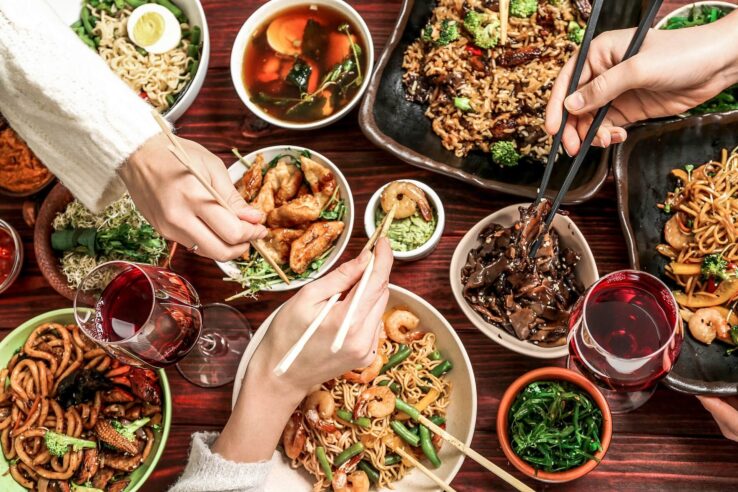The world of culinary has forever been a realm of excitement, innovation, and an ever-evolving art form. Throughout the years, global flavors have become increasingly familiar, as chefs and restaurateurs across the world incorporate them into their meals. However, with evolving food inclinations and a changing culinary landscape, it’s essential to explore trends in international cuisine and its impact on restaurant menus in the years ahead. A thorough business plan is a pivotal part of strategizing restaurant menus effectively. It offers a strategic view, directing the integration of international dishes while considering factors for example cost, supply chain administration, and consumer preference.
That is why we recommend examining our restaurant business plan template. Tailored to the needs of the culinary industry, it presents a practical structure to navigate the complexities of restaurant management and menu planning. Equipped with our template, you can confidently create a menu that not only celebrates international flavors but also ensures functional efficiency and profitability.
The Latest Developments in Global Gastronomy

Source: ktchnrebel.com
Middle Eastern cuisine is experiencing increased popularity globally due to its spice-rich dishes and a blend of flavors from grilled meats to vegetarian fare. Shawarma, falafel, and hummus have grown considerably in demand on menus internationally, reflecting this regional cuisine’s infiltration of the food industry.
Korean, Japanese, and Southeast Asian culinary styles continue making inroads as well, introducing exciting new tastes and ingredients that disrupt established markets. Their growing followings stem from unique flavors beyond standard fare, satisfying widespread appetites for the discovery of different regional specialties.
The Influence on Dining Establishment Menus
Incorporating worldwide culinary influences has become increasingly popular, foreshadowing that global restaurant selections will mirror this tendency. If this tendency continues gaining momentum, more eateries will presumably start providing fare exemplifying cuisines from abroad to accommodate customers’ broadening preferences stemming from cultural diversity. Local dining establishments supplying international menus afford patrons the opportunity to sample varied cooking without embarking on international excursions.
Unleashing Global Flavors into the Culinary World

Source: medium.com
Bringing international flavors together with local ingredients allows chefs to experiment, innovate, and develop exciting new menu options. Combining global flavors with what’s grown nearby leads to unique and tasty dishes that can give chefs a competitive advantage by attracting customers beyond geographical boundaries. Those who skillfully curate cross-cultural flavor pairings are sure to set themselves apart while acquiring patronage that transcends borders.
Unveiling the Significance of Being Genuine
Bringing authentic international dishes to your restaurant menu requires focusing carefully on accuracy while introducing diversity. Accuracy means the dish truly represents its geographical origins, using the ingredients, spices, and traditional cooking techniques found in that location. Having authentic dishes is crucial for satisfying customers, developing loyalty, and maintaining your restaurant’s reputation. Diners will appreciate you preserving the genuine qualities of the cuisine rather than approximating it.
The Next Era of Global Tastes

Source: nl.edu
When considering worldwide food trends growing more general, it is vital to comprehend the potential outcomes they offer. Business people and eatery proprietors are urged to discover more about global cooking. For instance, culinary specialists could figure out how to include new and special flavors into their menus; bistro proprietors could offer sampling menus that highlight societies and cuisines from around the globe. The potential results are boundless, and the effect on the sustenance business is genuinely energizing.
Overcoming Obstacles in Embracing Global Culinary Influences
Bringing culinary styles from around the world presents an engaging chance to branch out and think differently, though certain difficulties must be addressed. Chief among the issues is finding actual ingredients local to the food being highlighted. Some may not be easily acquired nearby or could be pricey to bring in, possibly affecting a restaurant’s budget decisions for their menu options.
One obstacle we must consider is guaranteeing that the chefs have the abilities and comprehension important to get ready feasts that are real and demonstrative of their first culture. Specialized culinary preparation may be expected to guarantee that the flavors, strategies, and presentation stay constant in their foundations.
The Influence on Client Contentment

Source: tastingtable.com
There are different ways how you can enhance your restaurant business. Incorporating global flavors into a restaurant’s menu can substantially heighten patron fulfillment. By furnishing a multifaceted assortment of cuisines, eating places cater toan the progressively diversifying urge for food of patrons who are more and more inquisitive about sampling new and singular tastes.
This not only attracts a more extensive patron foundation but also nurtures a sense of intrigue and stimulation among patrons, enhancing their dining come across. However, it is significant to note that patron fulfillment is intently linked to the authenticity of the dishes presented.
Customers appreciate true-to-origin tastes and presentation, and any deviation can potentially lead to dissatisfaction. Consequently, while international flavors can boost patron fulfillment, the flourishing execution of these dishes is key to confirming this good result.
Restaurants ultimately confront the obstacle of customer approval. Whereas global flavors can attract daring food enthusiasts, there remains a chance the local taste may not completely embrace these new culinary experiences.
Consequently, restaurants must find an equilibrium between innovation and consumer preferences, taking care to slowly introduce international flavors to their menu in a manner that does not isolate their existing clientele.
In exploring trends in global cuisines, it is clear this development is having a profound impact on the culinary arts worldwide. As chefs and restaurateurs experiment with flavors from diverse cultures, restaurant menus continue advancing.
Authentic representation of dishes is paramount to satisfy customers, maintain their loyalty, and safeguard a restaurant’s reputation when international foods are provided. The long-term prospects for experiencing cuisines across borders are stimulating, with boundless opportunities to debut novel and distinctive tastes.
For entrepreneurs and owners of eating establishments, this presents a moment to be daring, progressive, and investigate the variety and inventiveness international cuisine movements have to offer.




